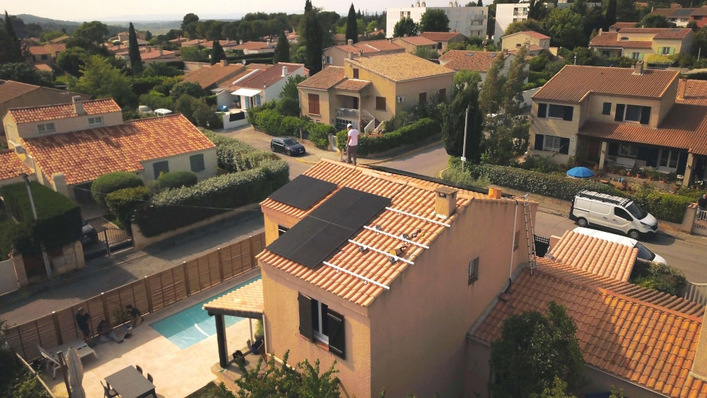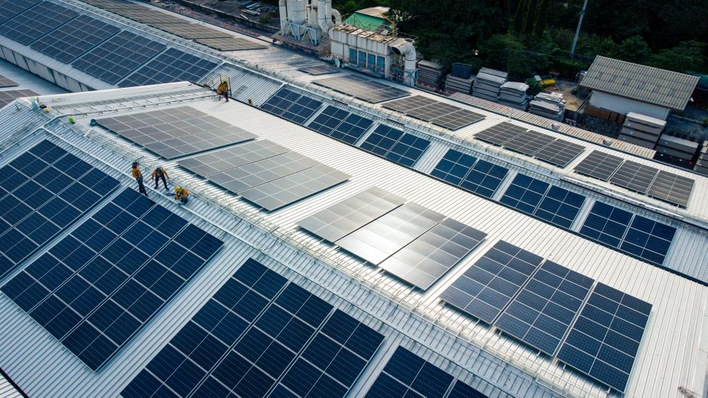First reason: The larger a solar park is, the greater the likelihood of a lightning strike, which is connected to the lightning distribution across the Earth’s surface. Secondly, greenfield installations usually cannot rely on pre-existing lightning protection systems, therefore one will always have to be put in place. Lastly, intelligently planning ahead reduces costs.
Great demand for wiring
Because the large area of solar panels brings about great demand for wiring. Furthermore, there is the need for interception rods, earth electrodes, excavation work for underground cables and the meshing in the potential equalisation foundations.
The panels are under the protection of a separate interception unit. This includes intercepting rods placed at the appropriate distance to the solar panels’ substructures. The utility buildings and the inverter station are also provided with external lightning protection. The connection of the deflectors to the earthing system is taken care of by connecting tags.
A ring earth electrode
The earthing system itself is implemented as a ring earth electrode (at least half a metre beneath ground level), using meshing of 20 by 20 metres. The metal structures of the panels are connected to the earthing wires at ten-metre intervals. The utility building is secured by foundation grounding electrodes. The earthing of the solar array and the utility building are inter-connected using flat steel strips.
As a rule of thumb, about 2.5 percent of the total investment for a solar park should go into the protection against lightning strikes and overvoltage. (HS)
Look at this, too:
Solar advice: Dramatic damages by lightning strikes
Stay informed, get our newsletter twice a week: Register here.
Find useful products for solar generation here.
Find useful products for solar energy storage here.







